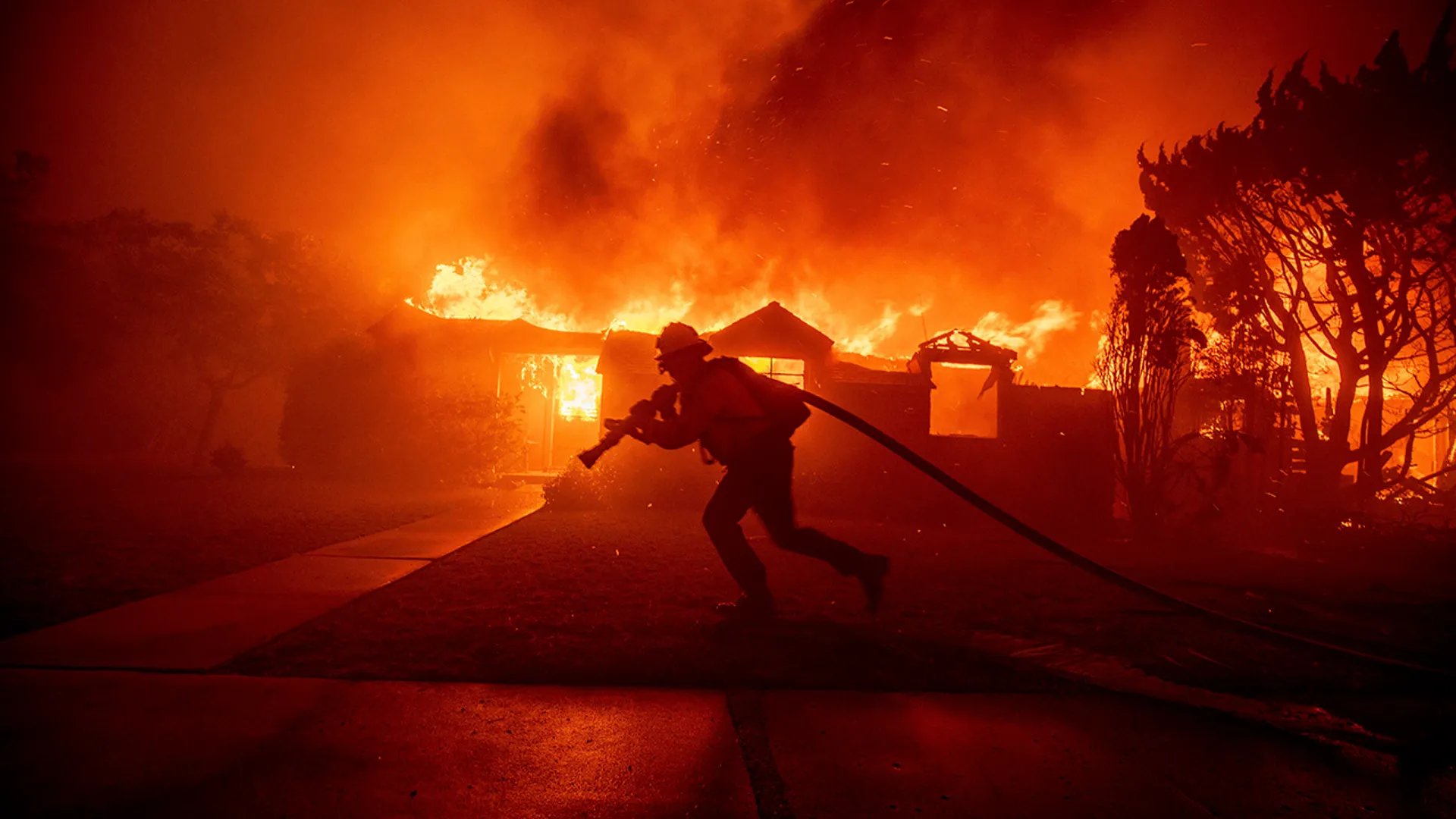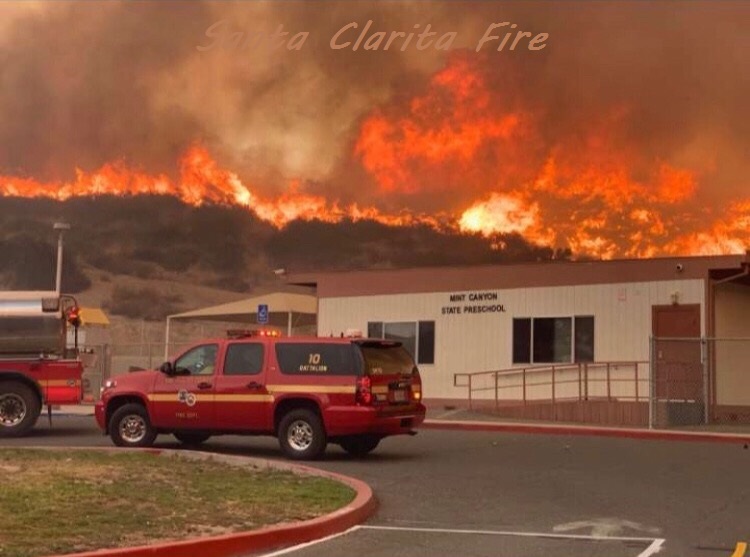Wildfires are unfortunately nothing new for Southern California, and the Santa Clarita Valley has seen its fair share over the years. Santa Clarita Fire Every year, when the weather gets hot and dry, the risk of fires skyrockets, and Santa Clarita often ends up in the headlines. The recent Santa Clarita fire has once again sparked conversations about fire safety, preparedness, and the impact of these natural disasters on the community. In this article, we’ll break down everything you need to know about the fire — from what caused it, to how it has affected the area, and what steps are being taken to prevent future incidents.
What Happened: A Look at the Santa Clarita Fire

The Santa Clarita fire broke out on what seemed like a normal, sunny afternoon. Santa Clarita Fire Like most fires in Southern California, it spread quickly due to a combination of dry brush, gusty winds, and scorching temperatures. Within hours, firefighters were deployed from multiple stations across Los Angeles County to contain the blaze.
Officials reported that the fire started near a rural part of the valley, where vegetation is plentiful. Once the flames started moving, nearby neighborhoods were put under evacuation warnings. Santa Clarita Fire For residents, this is not a new scenario — many living in Santa Clarita are well aware of “fire season” and know that things can escalate quickly.
The fire department worked around the clock, using helicopters, bulldozers, and ground crews to stop the flames from reaching residential areas. Santa Clarita Fire Thanks to their swift response, the damage was minimized compared to some of the catastrophic fires seen in California’s history. Still, the sight of smoke filling the sky was enough to put everyone on edge.
Impact on the Community and Local Residents
Whenever there’s a fire in Santa Clarita, it’s not just the flames that cause disruption. Santa Clarita Fire The entire community feels the ripple effects, even if their homes are not directly in danger. For many, the biggest issue is air quality. Thick smoke often lingers in the valley for days, making it hard for people with respiratory issues, young children, and the elderly to breathe safely.
Some schools had to close for a day or two because of the poor air quality, and outdoor sports activities were canceled to keep kids safe. Santa Clarita Fire Local businesses also saw a slowdown, especially restaurants and outdoor venues that rely on good weather and clear skies.
Evacuations were another major concern. Santa Clarita Fire Families had to quickly pack their essentials and leave their homes behind, not knowing if they would have anything to return to. For pet owners, this was especially stressful — scrambling to find carriers and safe shelters for their animals while dealing with the chaos of evacuation orders.
How Firefighters and Emergency Services Responded
One of the most impressive parts of this event was the coordination between different firefighting units. The Los Angeles County Fire Department, CAL FIRE, and local agencies worked together to contain the blaze as quickly as possible.
Firefighters created firebreaks — cleared strips of land that stop the fire from spreading — and used aerial water drops to slow the flames in hard-to-reach areas. Santa Clarita Fire Bulldozers were brought in to clear brush, and crews worked long shifts in dangerous conditions to protect lives and property.
Emergency alert systems were also put to good use. Residents received text messages and automated calls alerting them about evacuation zones and road closures. Santa Clarita Fire Social media was flooded with updates from local officials, which helped keep everyone informed in real-time. The response was fast, organized, and a great example of how preparation and training can make a difference during a natural disaster.
Environmental Effects of the Fire
When a fire like this hits Santa Clarita, it doesn’t just affect people — it affects the entire ecosystem. The charred hillsides left behind after a wildfire can take years to recover. Santa Clarita Fire Native plants and trees are often destroyed, leaving the soil exposed and vulnerable to erosion. This creates a risk of mudslides when the rainy season arrives.
Wildlife is also displaced. Coyotes, deer, and other animals that call the hills around Santa Clarita home often have to flee to find new territory. This sometimes leads to more animal sightings in suburban neighborhoods as they search for food and water.
The air quality takes a hit as well. Wildfires release a large amount of particulate matter into the atmosphere, which can travel miles beyond the fire zone. Even areas outside of Santa Clarita can feel the effects of smoky skies for days or weeks.
What Causes Fires in Santa Clarita?
Understanding what causes these fires is key to preventing them. In most cases, fires in Santa Clarita are sparked by a combination of human activity and weather conditions. Power lines, discarded cigarettes, illegal fireworks, and even vehicles pulling over on dry grass can be enough to start a fire.
Santa Ana winds — the hot, dry winds that sweep through Southern California — can turn a small spark into a raging inferno in a matter of minutes. This is why residents are urged to follow strict fire safety rules during peak fire season, such as clearing brush from around their homes and avoiding activities that could create sparks.
Climate change has also made the situation worse over the past decade. Drought conditions are more severe, vegetation is drier, and fire season seems to last longer every year. This means that fires like the one in Santa Clarita are becoming less of a rare event and more of an annual challenge.
How Residents Can Stay Prepared
For people living in Santa Clarita, fire preparedness is not optional — it’s a necessity. Having a “go bag” ready with essentials like clothes, medications, and important documents can save valuable time during an evacuation.
Clearing defensible space around the home is another critical step. Firefighters often say that defensible space can be the difference between a home surviving a wildfire or being destroyed. This means trimming back trees, clearing dead brush, and keeping flammable items away from the house.
Staying informed is equally important. Signing up for local alert systems, following the Los Angeles County Fire Department on social media, and having a battery-powered radio can ensure that residents never miss critical updates.
Lessons Learned and Moving Forward
Every fire teaches the community something new about preparedness and resilience. The Santa Clarita fire reminded everyone how quickly a situation can escalate, but also highlighted the strength of the community. Neighbors came together to help one another, offering shelter to those who had to evacuate and donating supplies to emergency responders.
Moving forward, the focus will be on reducing fire risks through better land management, stricter fire safety regulations, and continued public education. Santa Clarita officials have already announced plans to conduct controlled burns in certain areas to reduce fuel for future fires.
For residents, the takeaway is clear — while wildfires may be part of life in Southern California, being prepared can make all the difference when disaster strikes.

